|
|

|
Porsche, and the Porsche crest are registered trademarks of Dr. Ing. h.c. F. Porsche AG.
This site is not affiliated with Porsche in any way. Its only purpose is to provide an online forum for car enthusiasts. All other trademarks are property of their respective owners. |
|
|
  |
| Spoke |
 Aug 14 2018, 08:43 PM Aug 14 2018, 08:43 PM
Post
#21
|
|
Jerry      Group: Members Posts: 6,978 Joined: 29-October 04 From: Allentown, PA Member No.: 3,031 Region Association: None 
|
If the battery voltage is over 12.6V when running then the battery is being charged. Spoke, why would you say that the battery is being charged at only 12.6V measured voltage at the battery with the engine running? I have always seen a figure between 13.6 and 14.4 as the output for a properly operating alternator. The resting voltage of a battery is 12.6V. Anything higher than that indicates the battery is being charged. I just checked the battery voltage of my '86 930 when idling and revving to about 2500RPM and the battery voltage only increased to about 13.5V. I wasn't expecting the voltage to be that low but on the other hand I've never had an issue with starting or operating the car. Likewise about the 13.6-14.4V as the output being standard. My 914 does just under 14V at most all RPM. Not sure why the 930 is lower. It hasn't caused a no-start issue or running issue so I'll let it go for now. |
| db9146 |
 Aug 15 2018, 09:51 AM Aug 15 2018, 09:51 AM
Post
#22
|
|
Senior Member    Group: Members Posts: 953 Joined: 21-December 04 From: Atlanta, GA Member No.: 3,315 Region Association: None 
|
Spoke, I just updated my previous post. I agree with your comments above but my issue is that I never see a charging voltage above 13V now. I think when I saw those measurements, they were battery voltage of a brand new battery and now that I have run it some, I'm not seeing 13V. I'm also leaving it off the trickle charger in between occasional evening drives to check the battery/voltage in an "unsupported" environment.
|
| larryM |
 Aug 15 2018, 09:22 PM Aug 15 2018, 09:22 PM
Post
#23
|
|
emoze    Group: Members Posts: 891 Joined: 1-January 03 From: mid- California Member No.: 65 Region Association: Northern California 
|
If I'm getting 12V at the GEN bulb and D+ on the circuit board, wouldn't that indicate that the wiring between the circuit board, dash, and ignition switch is okay? NOTE: Before trying to perform the full field testing, I read that one common way to test modern alternators is to test for a magnetic field with a screwdriver once the switch is turned to the "on" position. However, I don't this will work on a Porsche -6 since it relies on the bulb to provide the resistance to "tickle" the alternator into charging. (Man I don't want to drop the engine for this....) - if light goes out on start, and you have battery volts at DF with ign ON not running, then "upstream" is all OK - the VR should be sending a signal to energize the field - ya gotta hope that field wire is attached correctly at the alternator i agree with your observation to Spoke about charging volts - "... minimum charging voltage is 13.8 volts dc across the battery terminals, or at the output of the alternator. A single lead-acid cell starts to charge at anything over 2.25 volts. Since a 12 volt battery has six cells, any 12 volt lead-acid battery needs at least 13.8 volts to start to charge. Testing battery and charging system - W8JI.com https://www.w8ji.com/battery_and_charging_system.htm - and if you turn on all the lights & loads it should kick up even higher, but will be regulated to 14.2-14.5 if your VR is good ... "To fully charge in reasonable times, alternator output must be 14.2 V to 14.5 V as measured right across the battery posts" (ibid) various sources will say "13.2-14.8" is the output range ( or more typically 13.8-14.2 means OK alternator) dunno about that magnet theory - (never heard that one before) where would you stick the screwdriver? - no way you can put it next to the alternator buried under the shroud - you might wanna test that idea on a different alternator on the bench engine drop - that's why our GT cars had a porthole in the back firewall - i have had alt out & back in thru that porthole several times over 25 yrs - it also makes timing & distributor & belt maintenance MUCH easier - i did enlarge my factory porthole a bit to make it easier the second time when the new IR Valeo 95-amp came with incorrect wiring diagram & I had exactly the problem you seem to be experiencing) (IMG:style_emoticons/default/rolleyes.gif) .... 2-days work cuz a vendor screwed up you might consider cutting one in - your car is enuf modified now that "originality" should not be a concern i think one of our vendors now sells a fiberglass cover for it, so you can use it for a pattern - (or i likely have an oem paper pattern stashed somewhere & could send it to you) 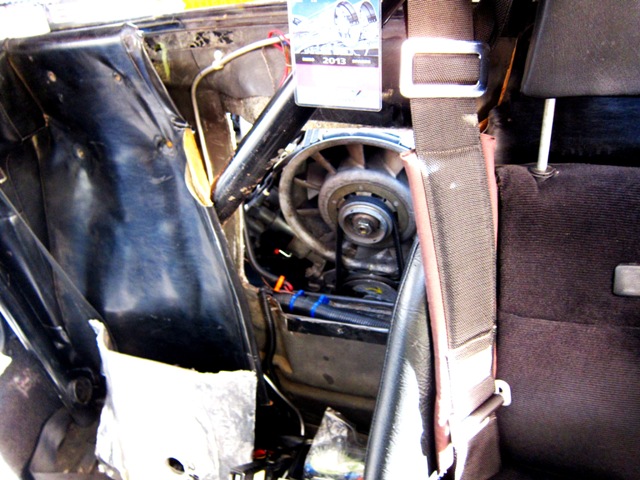 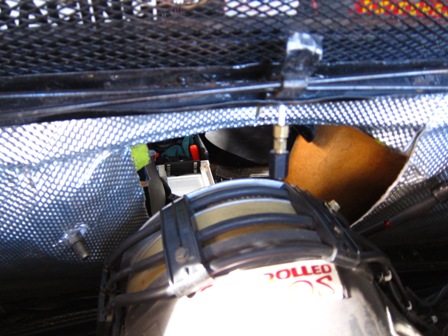 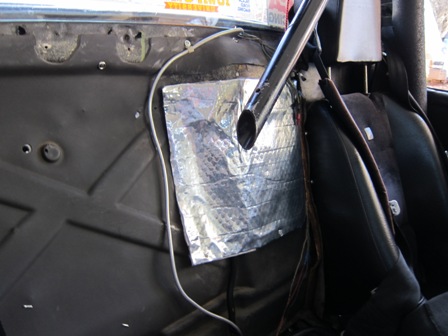 (IMG:style_emoticons/default/stirthepot.gif) |
| larryM |
 Aug 15 2018, 09:39 PM Aug 15 2018, 09:39 PM
Post
#24
|
|
emoze    Group: Members Posts: 891 Joined: 1-January 03 From: mid- California Member No.: 65 Region Association: Northern California 
|
p.s. - long ago i acquired some 911 engines & -6 stuff where the p.o. solved the 'engine drop" problem by cutting a large hole in the back of the shroud so he could get at the alternator wires - then he just made a nice grommeted rectangular patch & screwed it over the hole
(depends on how desperate one is & how much time & what shop resources one has, eh?) i eventually threw that shroud away but i did keep the air duct for the oil cooler (3.2 has a removable duct which makes things much easier) |
| larryM |
 Aug 19 2018, 10:29 AM Aug 19 2018, 10:29 AM
Post
#25
|
|
emoze    Group: Members Posts: 891 Joined: 1-January 03 From: mid- California Member No.: 65 Region Association: Northern California 
|
given everything you have reported above - consider DD's idea of bad diodes 6. Check for Alternator AC Voltage Leak Alternators use diodes to rectify alternating current produced by the alternator into direct current. When one or more diodes go bad, the alternator can cause all kinds of problems. AC voltage leak can cause your lights to dim and drain power from your battery, for example. Usually, you can detect this leak by measuring AC voltage across the battery posts using a digital multimeter. Start and let the engine idle. Set the parking brake and your transmission to Park (automatic) or Neutral (manual). Set your meter to a low AC voltage range and take your measurement. If you detect even a small amount of AC voltage, replace the alternator. Once you've determined the condition of the system, you can go over the next section to zero in on the potential problem(s) that may be causing the condition of the charging system. https://axleaddict.com/auto-repair/Alternat...Troubleshooting then see - IV. Troubleshooting for Unusual Charging System Voltage Drops |
| db9146 |
 Sep 6 2018, 01:50 PM Sep 6 2018, 01:50 PM
Post
#26
|
|
Senior Member    Group: Members Posts: 953 Joined: 21-December 04 From: Atlanta, GA Member No.: 3,315 Region Association: None 
|
Well, I spent last week dropping the engine and addressing several items I had noticed, including pulling the alternator and having it checked. The local auto electrical shop put it on his bench tester, spun it up and said "so its 55 amp unit, huh?" so it checked out okay. I double checked the wiring, fan belt, etc. as it was going back in.
Everything seems to be the same as it was before I pulled the engine. All the connections are good, dash light working as it should, traced the 12v through the circuits following the info posted (thanks again, LarryM), and swapped to a different VR. Getting 13.1 to 13.2V at the battery with it running. Not really any different before dropping the engine other than knowing that the alternator is working and the connections are good (even pulled the grommet out from around the large cable to the starter/battery from the shroud enough that I could check the back of the alternator once it was back in the engine....once I remembered I had a tiny camera to check it with....doh). 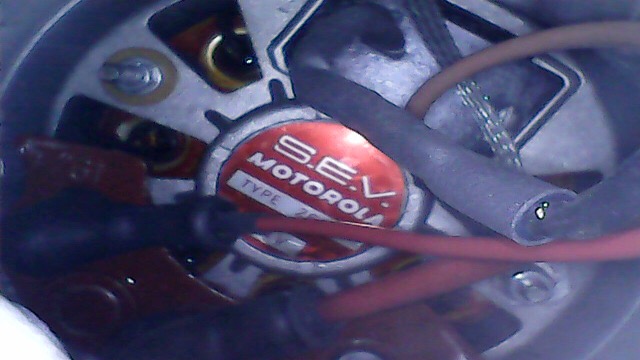 I also managed to seal a small oil leak, a small exhaust leak, clean up the underside of the car a little more, and install a new muffler so I guess it wasn't all for naught. I just really wish I could get the charging voltage up a bit. I may try a variable VR and see if that has any effect. You know, thinking about the VR, the external VR for a 911S looks like this: 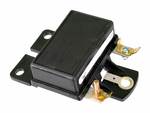 I wonder if even though the wiring is the same, there is some difference in the settings within the VR that is causing the output to be so low. The whole time I had the original engine in the car, I never checked the charging voltage. The original 2.0L -6 is a 911T engine I understand so you would think that the stock -6 VR would work fine with any other 911 engine with an external regulator, right? |
| larryM |
 Sep 8 2018, 09:50 PM Sep 8 2018, 09:50 PM
Post
#27
|
|
emoze    Group: Members Posts: 891 Joined: 1-January 03 From: mid- California Member No.: 65 Region Association: Northern California 
|
I wonder if even though the wiring is the same, there is some difference in the settings within the VR that is causing the output to be so low. ........... you would think that the stock -6 VR would work fine with any other 911 engine with an external regulator, right? all the same - - all regulators are "variable" - they deliver to load demand Part Number: 901.603.206.01 Brand: Bosch Model: 911, 912E, 914 Year: 1965-1976 your post #5 above said ... "It was 12.8V. I turned the key (GEN light came on), then started it up (rev'ed it and GEN light went off) and measured the voltage at the battery again - no change." therefore you have improved something, since you are now getting 13.2 which is in the "normal range" vs the 12.8 previous readings 13.2 V at what rpm? and with what loads being drawn? turn on everything electric, run 2000+ rpm, & see if it kicks up higher volts - it should BUT- if the volts drop lower than 13.2 via that simple test, it ain't chargin' right |
| db9146 |
 Sep 11 2018, 07:39 AM Sep 11 2018, 07:39 AM
Post
#28
|
|
Senior Member    Group: Members Posts: 953 Joined: 21-December 04 From: Atlanta, GA Member No.: 3,315 Region Association: None 
|
Well, I think I figured it out.
All 914-6s were set up for the Bosch style VRs which work with the Bosch externally regulated alternators in the stock 2.0L engines. The Bosch VR's housing fits nicely onto the stock -6 relay board. However, if you switch engines to a larger -6 that has an externally regulated SEV Marchal alternator like the one in my new engine, you can't use a Bosch VR.....you have to wire in an SEV Marchal regulator. This was my solution to get my charging system to work properly after installing a '74 911S 2.7L in my 914-6. I actually gutted an old Bosch VR and made up a small harness that could plug into the stock relay board connector under the VR but then it exits through the rectangular hole in the relay and wraps back up to make the connections on the new SEV Marchal VR. Doing it this way keeps any water out of the relay board connector under the Bosch VR. 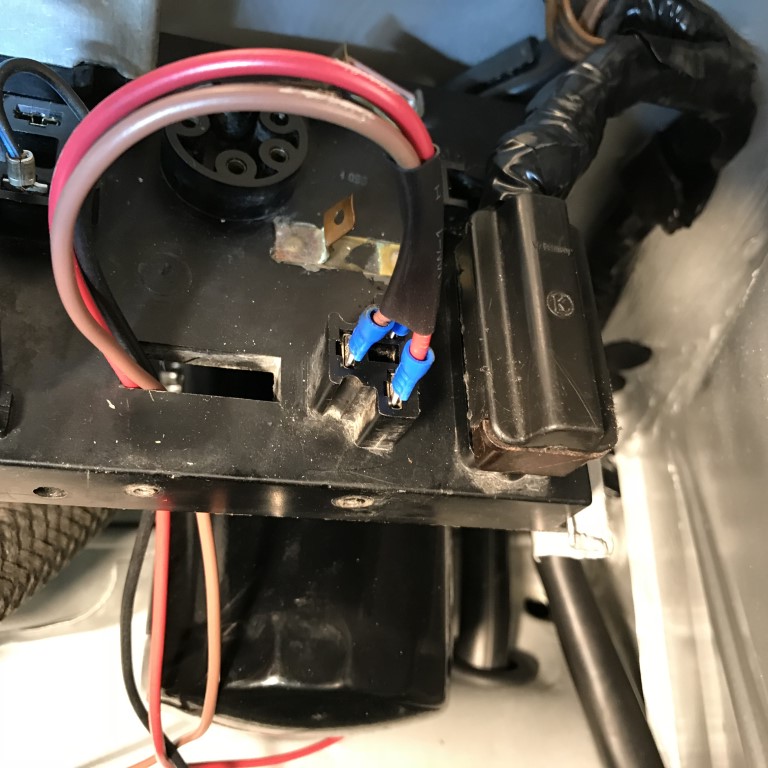 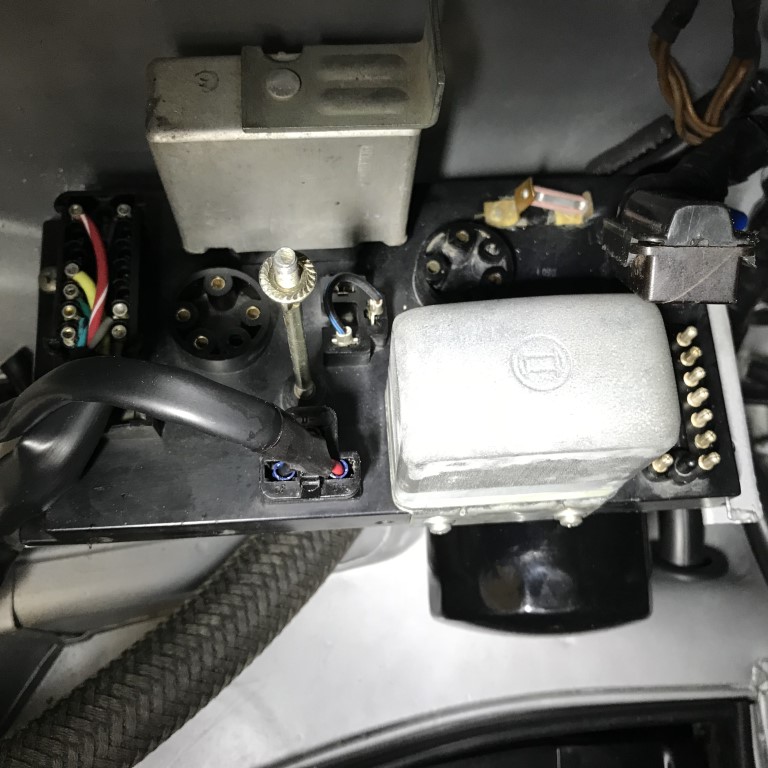 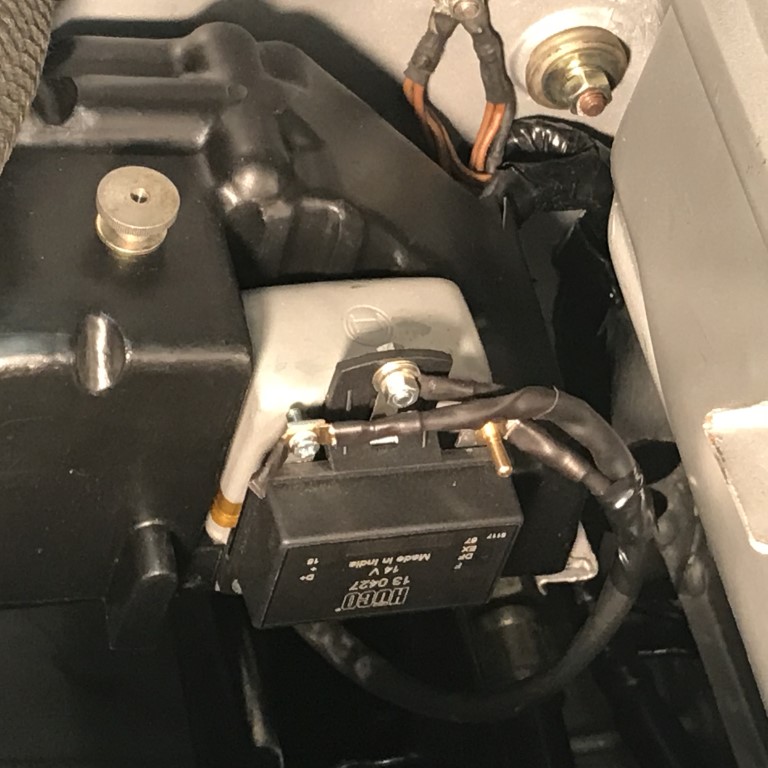 Frankly, I can't explain the difference, however, I can state my observations. 1) There is a label on the underside of the deck lid on an original 914-6 that states that you must match the manufacturer of the VF and alternator. Originally, my -6 had a Bosch alternator and a Bosch VR. When I installed the newly rebuilt 2.7 (which also had ITBs, Megasquirt, and distributorless ignition), I replaced the SEV Marchal alternator with a rebuilt one to avoid a problem down the road. I bought the SEV Marchal unit because I knew it would fit in the fan/fan housing. This is when my charging issue began. I could never get the new alternator to charge the new battery, despite chasing all of the connections and voltages. I could never find the problem. 2) I then started my search and when looking at the Pelican Parts website for a '74 911S (the car my new engine came from), PP had a Bosch VR listed but also a separate call-out for an SEV Marchal unit. If they list two different VRs for the same car, then maybe there is some difference that I don't fully understand. I believe the diagrams above point to that difference but I am not an electrical engineer and I haven't taken the time to study this difference until I understood it, but only to the point to recognize that there is a difference. 3) Last night after installing the SEV Marchal VR, I was able to get 13.5 - 13.6 volts indicated at the battery for the first time since discovering the problem ( (IMG:style_emoticons/default/piratenanner.gif) ). I know that this is not the 13.8-14.6 that is typically expected with other cars but it is in line with others who have posted about the charging voltages they have measured at the battery on other 911s/930s, including our own Spoke above.. So, while I can't state an explanation in specific terms, I have stepped through the problem in a logical manner (I believe), noted my observations along the way, and come to a satisfactory solution that I'm happy with. There is another similar thread I joined in on over on the PP board here that has some diagrams Alternator Problems which explain the differences between the Bosch system (alt. and VR) and the SEV Marchal system. LarryM, thanks again for all the help figuring this out, for the posts you added, and for the IMs as well! (IMG:style_emoticons/default/beerchug.gif) |
| FlacaProductions |
 Sep 11 2018, 09:15 AM Sep 11 2018, 09:15 AM
Post
#29
|
|
Senior Member    Group: Members Posts: 1,570 Joined: 24-November 17 From: LA Member No.: 21,628 Region Association: Southern California 
|
Just read this whole thread and I love it when a logical, thoughtful troubleshooting procedure ends with success. Nice work and good reference info for others in the future.
|
| ClayPerrine |
 Sep 11 2018, 10:20 AM Sep 11 2018, 10:20 AM
Post
#30
|
|
Life's been good to me so far.....                Group: Admin Posts: 15,442 Joined: 11-September 03 From: Hurst, TX. Member No.: 1,143 Region Association: NineFourteenerVille 
|
There is a SEV Marchal Voltage regulator that plugs into the relay board. I ran one with my 73 911 engine for years.
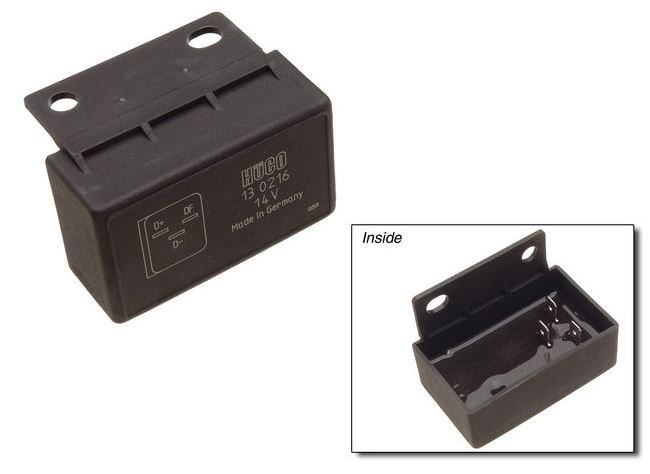 Worked fine with a stock six relay board. |
  |
1 User(s) are reading this topic (1 Guests and 0 Anonymous Users)
0 Members:

|
Lo-Fi Version | Time is now: 7th May 2024 - 07:02 PM |
Invision Power Board
v9.1.4 © 2024 IPS, Inc.








